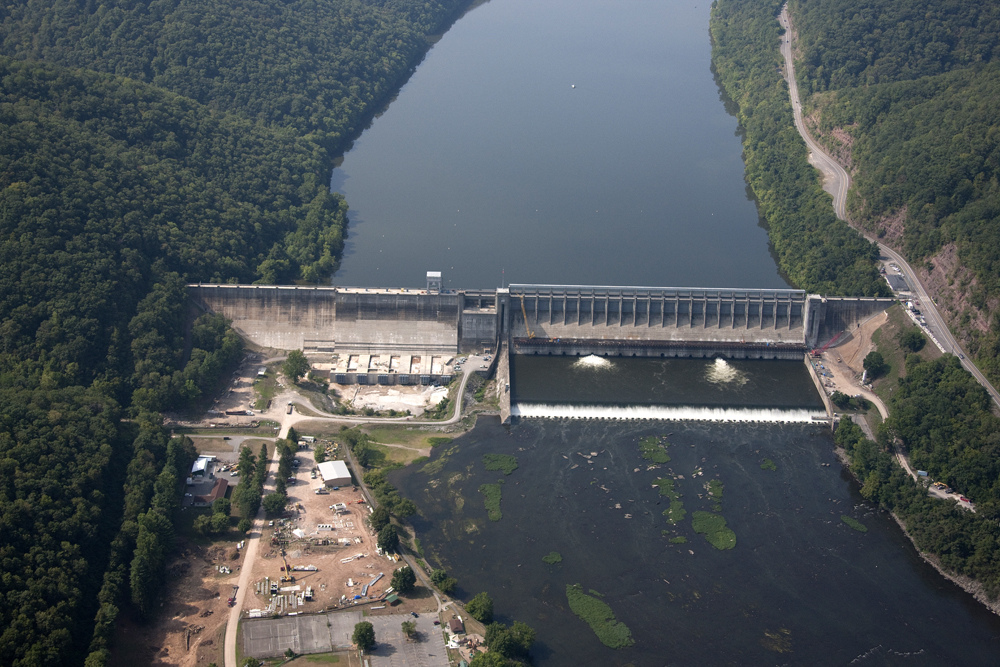In a farewell address this week, President Obama reiterated his administration’s commitment to acting on climate change—and his thoughts on the gravity of the issue. “Without bolder action, our children won’t have time to debate the existence of climate change.
They’ll be busy dealing with its effects.” Dealing with the impacts of climate change is something the Army Corps of Engineers has been grappling with for decades, especially as it relates to managing the nation’s waterways.
In our region, the Army Corps’ Gus Drum has been working on a climate adaptation plan for the Ohio River Basin, from its headwaters here in Pennsylvania to the Mississippi. That plan won’t be released until later this year, but Drum says that based on the nine climate models used by federal agencies to assess climate impacts on water, we can expect hotter, wetter weather across the region.
LISTEN to their conversation:
The Allegheny Front: So just how much more rainfall are we expected to get?
Gus Drum: In terms of precipitation, the Allegheny [River] gets progressively wetter. Especially in the springtime, we do see increases in precipitation—as much as 25 percent—which would result in higher stream flows.
AF: And with that much more water to deal with, tell us about the kinds of things you’re looking at in the Corps’ climate adaptation plan.
GD: Sure. There are 83 Corps of Engineers dams in the Ohio River Basin. Those dams were designed primarily in the ‘40s, ‘50s and ’60s. And at that time, because they had a rather limited historic context for the hydrology and hydraulics, they designed huge safety factors for storage. The projects that are out there right now, like Kinzua and several of the other dams on the Allegheny, actually have a fairly large factor of safety for storage of flood water.
In terms of adaptation strategies, what we might be looking at are changes in the water control manuals for several of those projects. Each one has a water control manual of how the project is supposed to be operated under certain conditions. So we would potentially make changes to address climate change by changing the water control manuals for the storage and release of water.
But in terms of safety, there are more than a hundred local floodwalls and levees that protect an awful lot of communities up and down the Ohio River that could otherwise be flooded. There is a concern among climatologists that we could be facing more intense thunderstorm activity than we’ve seen in the past. They may be less frequent, but they’ll be more intense. So there is the risk in some cases for more flash flooding in areas that have steep gradient streams in mountainous areas.
We do have some levees and floodwalls that have a specific crest height of protection, so there is a little concern over whether those crest heights will be high enough to handle these new rainfall events. And all of this revolves around how much money it costs to put those adaption procedures in place and what’s the return on investment to the nation when we begin to do that.
AF: And although the dams are old, you’ve mentioned they’ll likely be repaired or updated before the worst climate impacts are expected. And additionally, you say that as temperatures rise, there actually might be benefits for some fish species and freshwater mussels.
GD: Certainly more water is going to be a good thing. They would rather have more than less. And the reservoirs—we would try to maintain the flows coming out of the reservoirs to sustain the aquatic species based on the changing climate or precipitation. Obviously, the warmer air temperatures would eventually begin to result in warmer water temperatures. I
think the team has thought the reservoirs will be a blessing in those situations, because a lot of the reservoirs are very deep, so they contain a lot of cold water down at the bottom. And so those times when air temperatures may increase water temperatures, the water coming out of those reservoirs will be cool enough to maintain temperatures downstream that otherwise may have gotten too warm for a number of species.
AF: And from your perspective, give us some sense of just how important the Ohio River is to the region—and the nation.
GD: Well, certainly for the region, it is extremely important. It moves as much as 270 million tons of cargo every year. It’s a huge transportation network for various commodities, raw materials and various things that support the economy here. Obviously, for recreation it’s huge. Five million people use it for a water supply. There are a number of thermoelectric power plants that withdraw water out of the river to create electric energy, and there are a number of hydroelectric power plants at the locks and dams. So, it’s a huge resource for this region.
And nationally, at Cairo, Illinois, 60 percent of the flow in the Mississippi River comes out of the Ohio River. If something happens to the Ohio River, the Mississippi is in trouble. It either has too much water and there’s flooding, or there’s not enough water and there’s no navigation. So in terms of its effect on the country, it’s huge.
###
Gus Drum is with the Huntington District of the Army Corps of Engineers. You can read more about this topic in our Headwaters series on the future of the Ohio River.

